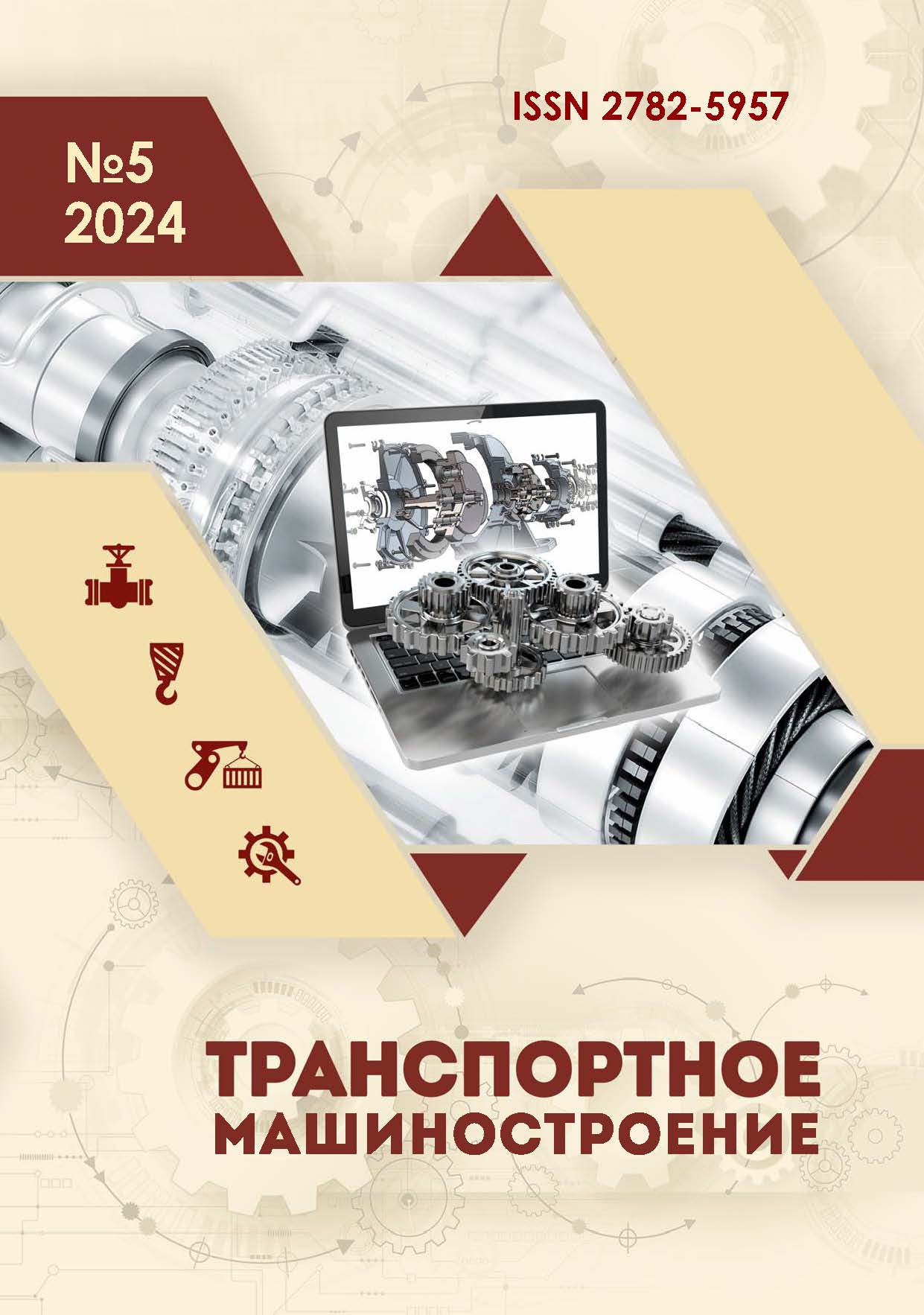Rostov-on-Don, Rostov-on-Don, Russian Federation
Rostov-on-Don, Rostov-on-Don, Russian Federation
Rostov-on-Don, Rostov-on-Don, Russian Federation
Russian Library and Bibliographic Classification 392
The study objective is to improve the reliability and energy efficiency of the electric locomotive compressor drive. To achieve this, the required power of the electric motor was calculated the performance of the compressor unit, the volume of the main tanks and the selected electric motor were checked to start and adjust the capacity at low supply voltage. The task to which the paper is devoted is to design an electric drive for a compressor motor. A vector model of an asynchronous motor was made. The process of direct start-up and starting an asynchronous electric motor with the use of a scalar control system and IR compensation were modeled. Research methods: systematic approach; provisions of the theory of automatic control and electrical engineering; numerical PC simulation using Matlab software package. The novelty of the work is in the use of a frequency-controlled electric drive to start the asynchronous electric motor of the compressor unit instead of the normally installed starting capacitors. This design solution will significantly reduce the amplitude of the starting currents, which in turn will reduce the wear of the winding insulation. The study results are presented, based on the results of the constructed models, as graphs of the dependencies of speed and current during direct start of the electric motor and with the control system. Conclusions: the scalar control system, thanks to the introduction of an intensity setter, as well as IR compensation diagram, allow extending the transition time and controlling the value of the inrush current in acceptable values. Such an approach to make an electric drive compressor motor is able to significantly increase its reliability and service life, as well as to increase the overall energy efficiency of the system.
electric locomotive, machines, compressor unit, electric drive, system, control, IR compensation diagram
1. Kosmodamiansky AS, Vorobyov VI, Pugachev AA. Traction and auxiliary drive of locomotives with asynchronous motors. Lokomotiv. 2019;3(747):30-34.
2. Olkhovatov, DV, Shevkunova AV. Development of the energy-efficient asynchronous electric drive of a locomotive blower motor. Herald of the Ural State University of Railway Transport. 2023;3(59):46-55.
3. Olkhovatov DV, Shevkunova AV, Donchenko AV. Synthesis of an electric fan drive for cooling traction electric motors. Machine Drives and Parts. 2023;1-3(40):6-10.
4. Alekseeva T L, Ryabchenok NL, Astrakhantsev LA, Nemykina VV. The analysis of energy efficiency of asynchronous electric drive of electric locomotives. Modern Technologies. System Analysis. Modeling. 2020;1(65):101-111.
5. Andryushchenko AA, Zarifyan AA, Kolpakhchyan PG. Increasing energy efficiency of electric passenger locomotives with asynchronous locomotive driving unit. Proceedings of Petersburg Transport University. 2015;4(45):5-14.
6. Vyzhimova, VN. Comprehensive assessment of factors affecting the reliability of asynchronous auxiliary machines of AC electric locomotives, determination of the main causes of failures [Internet]. Modern Technologies. System Analysis. Modeling. 2013;3(39) [cited 2024 Apr 05]. Available from: https://cyberleninka.ru/article/n/kompleksnaya-otsenka-faktorov-vliyayuschih-na-nadezhnost-asinhronnyh-vspomogatelnyh-mashin-elektrovozov-peremennogo-toka-opredelenie.
7. Vasiliev AA. Reliability analysis of auxiliary electric machines of electric trains of the East Siberian region [Internet]. Modern Technologies. System Analysis. Modeling. 2015;2(46) [cited 2024 Apr 05]. Available from:https://cyberleninka.ru/article/n/analiz-nadezhnosti-vspomogatelnyh-elektricheskih-mashin-elektropoezdov-vostochno-sibirskogo-regiona.
8. Ivanov PYu. Improving the operational reliability of asynchronous auxiliary machines of mainline electric locomotives of alternating current [dissertation]. [Irkutsk (RF)]: Irkutsk State Transport University; 2015.
9. Aflyatunov IF. Asynchronous electric drive with capacitor start-up compensating device [dissertation]. [Ulyanovsk (RF)]: Ulyanovsk State Technical University; 2016.
10. Masenko AV, Skvortsov VA, Sbitneva NI, Shchebeteev VA. Advantages and disadvantages of modern soft-start devices for electric motors. Problemi Nauchnoi Mysli. 2019;1(3):59-65.
11. Eremochkin SYu, Zhukov AA, Dorokhov DV. Development and research of a simulation model of an asynchronous electric drive with a single-phase frequency speed controller [Internet]. Bulletin of NGIEI. 2021;11(126) [cited 2024 Apr 07]. Available from: https://cyberleninka.ru/article/n/razrabotka-i-issledovanie-imitatsionnoy-modeli-asinhronnogo-elektroprivoda-s-odnofaznym-chastotnym-regulyatorom-skorosti.
12. Marchenko AA, Stoletov SV. Study of the mechanical characteristics of an asynchronous electric motor in the mode of generator braking [Internet]. Technical Operation of Water Transport: Problems and Ways of Development. 2022;4 [cited 2024 Apr 07]. Available from: https://cyberleninka.ru/article/n/issledovanie-mehanicheskih-harakteristik-asinhronnogo-elektrodvigatelya-v-rezhime-generatornogo-tormozheniya.






